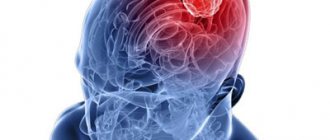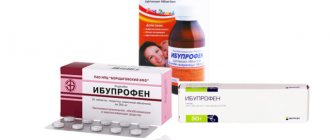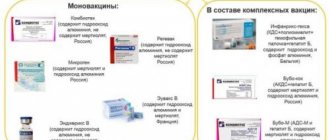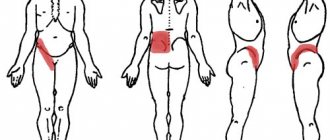What is bactericidal action
This property of drugs is used to destroy various microorganisms. Various physical and chemical agents have this quality. Bactericidal action is their ability to destroy the cell wall of bacteria and thereby cause their death. The speed of this process depends on the concentration of the active substance and the number of microorganisms. Only when using antibiotics of the penicillin group, the bactericidal effect does not increase with an increase in the amount of the drug. The following have a bactericidal effect:
- ultraviolet rays, radioactive radiation;
- antiseptic and disinfectant chemicals, for example, chlorine, iodine, acids, alcohols, phenols and others;
- chemotherapeutic drugs with antibacterial action for oral administration.
Penicillins
These are common and cheap antibiotics, most of them are available in tablets and suspensions, so they are easy to use in outpatient practice (clinic, consultation centers).
Indicated for infection with gram-positive, gram-negative (gonococcus, meningococcus, E. coli, Haemophilus influenzae, Helicobacter pylori, salmonella) microbes. The drugs do not affect Proteus, mycoplasma, rickettsia. They have a bactericidal effect (complete destruction of cells).
Where are such funds required?
A bactericidal effect is a property of some substances that a person constantly needs in economic and household activities. Most often, such preparations are used to disinfect premises in children's and medical institutions, public places and catering establishments. They are used to treat hands, dishes, and equipment. Bactericidal preparations are especially needed in medical institutions, where they are used constantly. Many housewives use such substances at home to treat their hands, plumbing fixtures and floors.
Medicine is also an area where bactericidal drugs are used very often. In addition to hand treatment, external antiseptics are used to cleanse wounds and fight infections of the skin and mucous membranes. Chemotherapy drugs are currently the only means of treating various infectious diseases caused by bacteria. The peculiarity of such drugs is that they destroy the cell walls of bacteria without affecting human cells.
Routes of administration
The drug can enter the body in various ways.
- Oral route, i.e. through the mouth. Tablets, powders, capsules, syrups, etc. are used. We must not forget that some drugs have poor absorption and are destroyed in the stomach.
- Injection route, bypassing the mouth. It can be injected into a muscle, vein, and even into the spinal canal. With this method of administration, the drug enters the internal environment of the body much faster. In very severe forms there is simply no time left to take pills. This path is preferable.
Once in the blood, the antibiotic reaches a specific organ. Tropism (selectivity) to any organ is observed. In accordance with this, a specific antibiotic is chosen for a specific pathology.
The ability to penetrate the biological environment of the body and achieve the highest concentration in them varies among different drugs. Antibiotics are metabolized in the body. The end products of decomposition must be removed.
Elimination (removal) of the drug from the body occurs in several ways. Can be excreted in urine, bile and other substrates. The output occurs either unchanged or in the form of modified breakdown products.
Bactericidal antibiotics
Such drugs are most often used to fight infection. Antibiotics are divided into two groups: bactericidal and bacteriostatic, that is, those that do not kill bacteria, but simply prevent them from multiplying. The first group is used more often, since the effect of such drugs occurs faster. They are used in acute infectious processes when intensive division of bacterial cells occurs. In such antibiotics, the bactericidal effect is expressed in disrupting protein synthesis and preventing the construction of the cell wall. As a result, the bacteria die. These antibiotics include:
- penicillins - “Amoxicillin”, “Ampicillin”, “Benzylpenicillin”;
- cephalosporins, for example, Cefixime, Ceftriaxone;
- aminoglycosides - “Gentamicin”, “Amikacin”, “Streptomycin”;
- fluoroquinolones - “Norfloxacin”, “Levofloxacin”;
- "Rifampicin", "Gramicidin", "Sulfamethoxazole", "Metronidazole".
9.Do antibiotics help with viral diseases?
This is a very important question, since today doctors very often prescribe antibiotics where they are completely unnecessary, for example, for viral diseases. In people's understanding, infection and disease are associated with bacteria and viruses, and people believe that in any case they need an antibiotic to recover.
To understand the process, you need to know that bacteria are microorganisms, often single-celled, that have an unformed nucleus and a simple structure, and may also have a cell wall or be without it. It is for them that antibiotics are designed, since they act exclusively on living microorganisms. Viruses are compounds of protein and nucleic acid (DNA or RNA). They are integrated into the genome of the cell and begin to actively multiply there at its expense.
Antibiotics are not able to influence the cellular genome and stop the process of replication (multiplication) of the virus in it, therefore they are absolutely ineffective for viral diseases and can only be prescribed when bacterial complications occur. The body must overcome a viral infection on its own, as well as with the help of special antiviral drugs (interferon, anaferon, acyclovir).
Plants with bactericidal action
Some plants also have the ability to destroy bacteria. They are less effective than antibiotics and act much slower, but are often used as an auxiliary treatment. The following plants have a bactericidal effect:
- aloe;
- black elderberry;
- burnet;
- celandine;
- plantain;
- sea kale.
Local disinfectants
Such preparations, which have a bactericidal effect, are used to treat hands, equipment, medical instruments, floors and plumbing. Some of them are safe for the skin and are even used to treat infected wounds. They can be divided into several groups:
- chlorine preparations: bleach, “Chloramine”, “Javel”, “Chlorsept” and others;
- oxygen-containing products: hydrogen peroxide, “Hydroperit”;
- iodine preparations: alcohol solution, Lugol, Iodoform;
- acids and alkalis: salicylic acid, boric acid, sodium bicarbonate, ammonia;
- preparations containing metals - silver, copper, aluminum, lead and others: alum, lead water, zinc ointment, Xeroform, Lapis, Protorgol;
- as well as phenol, formalin, tar, Furacilin and others.
Rules for the use of such drugs
All germicides are potent and can cause serious side effects. When using external antiseptics, be sure to follow the instructions and avoid overdose. Some disinfectants are very toxic, for example, chlorine or phenol, so when working with them you need to protect your hands and respiratory organs and strictly follow the dosage.
Chemotherapy drugs taken by mouth can also be dangerous. After all, along with pathogenic bacteria, they also destroy beneficial microorganisms. Because of this, the patient’s gastrointestinal tract is disrupted, there is a lack of vitamins and minerals, immunity decreases and allergic reactions appear. Therefore, when using bactericidal drugs, you need to follow some rules:
- they must be taken only as prescribed by a doctor;
- The dosage and regimen of administration are very important: they act only if there is a certain concentration of the active substance in the body;
- treatment should not be interrupted prematurely, even if the condition has improved, otherwise the bacteria may develop resistance;
- It is recommended to drink antibiotics only with water, as they work better this way.
Bactericidal drugs affect only bacteria, destroying them. They are ineffective against viruses and fungi, but destroy beneficial microorganisms. Therefore, self-medication with such drugs is unacceptable.
The human body is attacked every day by many microbes that try to settle and develop at the expense of the internal resources of the body. The immune system usually copes with them, but sometimes the resistance of microorganisms is high and you have to take medications to fight them. There are different groups of antibiotics that have a certain spectrum of action and belong to different generations, but all types of this drug effectively kill pathological microorganisms. Like all powerful medications, this drug has its side effects.
Carbapenems
General structure of carbapenems They belong to β-lactam antibiotics; compared to penicillins and cephalosporins, they are more resistant to the action of β-lactamases. These include impineme and meropenem . The mechanism of action is similar to that of penicillins and cephalosporins. They have a wider spectrum of activity, acting on many Gr+ and Gr– bacteria. Staphylococci, streptococci, including pneumococci, gonococci, meningococci, bacteria of the Enterobacteriaceae family, spore-forming and non-spore-forming anaerobes are sensitive to them. Indications: 1. Severe infections of the lower respiratory tract, urinary tract, intra-abdominal, pelvic organs, skin and soft tissues, sepsis caused by multiresistant and mixed microflora; 2. Endocarditis, infections of bones and joints - only impinema; 3. Meningitis - only meropenem. Frequent side effects: allergic, dysfunction of the gastrointestinal tract, from the central nervous system - dizziness, tremor, convulsions. Allergic reactions are cross-reactions with all carbapenems, and in 50% of patients also with penicillins. Cannot be used with other β-lactam antibiotics due to their antagonism.
What is an antibiotic
This is a group of drugs that have the ability to block protein synthesis and thereby inhibit the reproduction and growth of living cells. All types of antibiotics are used to treat infectious processes that are caused by different strains of bacteria: staphylococcus, streptococcus, meningococcus. The drug was first developed in 1928 by Alexander Fleming. Antibiotics of certain groups are prescribed for the treatment of oncological pathologies as part of combination chemotherapy. In modern terminology, this type of medication is often called antibacterial drugs.
2.When were antibiotics discovered?
Antibiotics were first discussed in 1928, when British scientist Alexander Fleming conducted an experiment on growing colonies of staphylococci and discovered that some of them were infected with Penicillum mold, which grows on bread. Around each infected colony there were areas that were not infected with bacteria. The scientist suggested that mold produces a substance that destroys bacteria. The new discovered substance was named penicillin and the scientist announced his discovery on September 13, 1929 at a meeting of the Medical Research Club at the University of London.
But the newly discovered substance was difficult to put into widespread use, since it was extremely unstable and quickly deteriorated during short-term storage. Only in 1938, penicillin was isolated in its pure form by Oxford scientists Horward Florey and Ernest Chain, and mass production began in 1943 and the drug began to be actively used during the Second World War. For a new turn in medicine, both scientists were awarded the Nobel Prize in 1945.
Classification of antibiotics by mechanism of action
The first drugs of this type were medications based on penicillin. There is a classification of antibiotics according to groups and mechanism of action. Some of the drugs have a narrow focus, others have a broad spectrum of action. This parameter determines how much the medicine will affect a person’s health (both positively and negatively). Medicines help cope with or reduce the mortality rate of such serious diseases:
Bactericidal
This is one of the types from the classification of antimicrobial agents according to pharmacological action. Bactericidal antibiotics are drugs that cause lysis, the death of microorganisms. The medication inhibits membrane synthesis and suppresses the production of DNA components. The following groups of antibiotics have these properties:
- carbapenems;
- penicillins;
- fluoroquinolones;
- glycopeptides;
- monobactams;
- fosfomycin.
Bacteriostatic
The action of this group of medications is aimed at inhibiting the synthesis of proteins by microbial cells, which prevents them from further multiplying and developing. The result of the action of the drug is to limit the further development of the pathological process. This effect is typical for the following groups of antibiotics:
Cephalosporins
General structure of cephalosporins Also classified as β-lactam antibiotics, they are one of the most numerous and frequently prescribed classes due to their low toxicity. The mechanism of action is similar to penicillins, they have 4 generations, each of which is ahead of the previous one in the spectrum of action.
I generation:
1) Parenteral (cefazolin);
2) Oral (cephalexin, cefadroxil). Antibiotics are active against Streptococcus spp. (S.pyogenes, S. pneumoniae) and methicillin-sensitive Staphylococcus spp. In terms of the level of antipneumococcal activity, first-generation cephalosporins are inferior to aminopenicillins and most later cephalosporins. First generation cephalosporins have a narrow spectrum of action and a low level of activity against gram-negative bacteria. The main indications for the use of cephalosporin are preoperative prophylaxis in surgery, as well as the treatment of skin and soft tissue infections; to the use of cefazolin - streptococcal tonsillopharyngitis, community-acquired infections of the skin and soft tissues of mild severity.
II generation:
1) Parenteral (cefuroxime);
2) Oral (cefaclor, cefuroxime axetil).
With a similar antimicrobial spectrum, cefuroxime is more active against Streptococcus spp.
and Staphylococcus spp. The spectrum of action of cephalosporins of the second generation against gram-negative microorganisms is wider than that of representatives of the first generation; The activity of cefuroxime against gonococci is of clinical significance. Due to the resistance of cefuroxime to β-lactamases, it is active against M. catarrhalis, Haemophilus spp., E. coli, Shigella spp., Salmonella spp., P. mirabilis, Klebsiella spp., P. vulgaris, C. diversus. The main indications for use are community-acquired upper respiratory tract infections, hospital-acquired community-acquired pneumonia, community-acquired skin and soft tissue infections, urinary tract infections, perioperative preparation in surgery.
III generation:
1) Parenteral (cefotaxime, ceftriaxone, ceftazidime, cefoperazone, cefoperazone + sulbactam);
2) Oral (cefixime, cefibutene).
The basic antibiotics in this group are ceftriaxone and cefotaxime, which have high activity against Streptococcus spp., Staphylococcus aureus, corynebacteria, meningococcus, gonococci, H. influenzae and M. catarrhalis, penicillin-resistant pneumococcus and viridans streptococcus.
They have high activity against almost the entire Enterobacteriaceae family. Ceftazidime and cefoperazone also have activity against P. aeruginosa, but significantly less activity against streptococci. Cefixime and cefibutene have little activity against Streptococcus spp., the Enterobacteriaceae family and pneumococci. Indications are moderate and severe community-acquired and nosocomial infections of the lower respiratory tract, urinary tract, skin, soft tissues, bones, joints, intra-abdominal infections, infections of the pelvic organs, meningitis, sepsis, infections due to immunodeficiency. Cefixime and cefibutene are also prescribed for mild to moderate pyelonephritis in children, pregnant and lactating women.
IV generation:
1) Parenteral (cefepime).
It is similar in parameters to third generation drugs, but also has high activity against P. aeruginosa, Enterobacter spp., C. freundii, Serratia spp., M. morganii, P. stuartii, P. rettgeri and non-fermenting microorganisms.
Indications are severe infections of the lower respiratory tract, urinary tract, skin, soft tissues, bones, joints caused by multidrug-resistant microflora, as well as sepsis. Common side effects of cephalosporins include allergic reactions and gastrointestinal dysfunction; Convulsions from the central nervous system, cholestasis and pseudocholelithiasis from the liver may be observed. The allergy is cross-allergic to all cephalosporins, and cross-allergy with penicillins can also be observed. Due to low excretion in children and the elderly, their half-life of cephalosporins increases. Combination with aminoglycosides or loop diuretics may cause a nephrotoxic effect. Antacids reduce the absorption of oral forms.
Classification of antibiotics by chemical composition
The main division of drugs is based on their chemical structure. Each of them is based on a different active substance. This division helps to fight specifically against a specific type of microbe or to have a broad spectrum of action on a large number of varieties. This prevents bacteria from developing resistance (resistance, immunity) to a specific type of medication. The main types of antibiotics are described below.
Penicillins
This is the very first group that was created by man. Antibiotics of the penicillin group (penicillium) have a wide range of effects on microorganisms. Within the group there is an additional division into:
- natural penicillins - produced by fungi under normal conditions (phenoxymethylpenicillin, benzylpenicillin);
- semisynthetic penicillins are more resistant to penicillinases, which significantly expands the spectrum of action of the antibiotic (methicillin, oxacillin medications);
- extended action – preparations of ampicillin, amoxicillin;
- medicines with a wide spectrum of action - azlocillin, mezlocillin.
In order to reduce bacterial resistance to this type of antibiotics, penicillinase inhibitors are added: sulbactam, tazobactam, clavulanic acid. Vivid examples of such medications are: Tazocin, Augmentin, Tazrobida. Medicines are prescribed for the following pathologies:
- respiratory system infections: pneumonia, sinusitis, bronchitis, laryngitis, pharyngitis;
- genitourinary: urethritis, cystitis, gonorrhea, prostatitis;
- digestive: dysentery, cholecystitis;
- syphilis.
Cephalosporins
The bactericidal property of this group has a wide spectrum of action. The following generations of cephalosporins are distinguished:
- I-e, drugs cefradine, cephalexin, cefazolin;
- II, products with cefaclor, cefuroxime, cefoxitin, cefotiam;
- III, medications ceftazidime, cefotaxime, cefoperazone, ceftriaxone, cefodizime;
- IV, products with cefpirome, cefepime;
- V-e, medications fetobiprole, ceftaroline, fetolosan.
Most of the antibacterial medications in this group are available only in the form of injections, so they are used more often in clinics. Cephalosporins are the most popular type of antibiotics for inpatient treatment. This class of antibacterial agents is prescribed for:
- pyelonephritis;
- generalization of infection;
- inflammation of soft tissues, bones;
- meningitis;
- pneumonia;
- lymphangitis.
Macrolides
This group of antibacterial drugs has a macrocyclic lactone ring as a base. Macrolide antibiotics have a bacteriostatic effect against gram-positive bacteria, membrane and intracellular parasites. There are much more macrolides in tissues than in the blood plasma of patients. Products of this type have low toxicity; if necessary, they can be given to a child or a pregnant girl. Macrolytics are divided into the following types:
- Natural. They were synthesized for the first time in the 60s of the 20th century, these include spiramycin, erythromycin, midecamycin, and josamycin.
- Prodrugs, the active form is taken after metabolism, for example, troleandomycin.
- Semi-synthetic. These are clarithromycin, telithromycin, azithromycin, dirithromycin.
Tetracyclines
This species was created in the second half of the 20th century. Antibiotics of the tetracycline group have an antimicrobial effect against a large number of strains of microbial flora. At high concentrations, a bactericidal effect is manifested. A feature of tetracyclines is their ability to accumulate in tooth enamel and bone tissue. This helps in the treatment of chronic osteomyelitis, but also disrupts skeletal development in young children. This group is prohibited for pregnant girls and children under 12 years of age. These antibacterial medications are represented by the following drugs:
- Oxytetracycline;
- Tigecycline;
- Doxycycline;
- Minocycline.
Contraindications include hypersensitivity to components, chronic liver pathologies, porphyria. Indications for use are the following pathologies:
- Lyme disease;
- intestinal pathologies;
- leptospirosis;
- brucellosis;
- gonococcal infections;
- rickettsiosis;
- trachoma;
- actinomycosis;
- tularemia.
Aminoglycosides
The active use of this series of medications is carried out in the treatment of infections caused by gram-negative flora. Antibiotics have a bactericidal effect. The drugs show high efficiency, which is not related to the indicator of the patient’s immune activity, making these medications indispensable for weakening of the immune system and neutropenia. The following generations of these antibacterial agents exist:
- The drugs kanamycin, neomycin, chloramphenicol, streptomycin belong to the first generation.
- The second includes products with gentamicin and tobramycin.
- The third includes amikacin drugs.
- The fourth generation is represented by isepamycin.
Indications for the use of this group of medications are the following pathologies:
- sepsis;
- respiratory tract infections;
- cystitis;
- peritonitis;
- endocarditis;
- meningitis;
- osteomyelitis.
Fluoroquinolones
One of the largest groups of antibacterial agents has a broad bactericidal effect on pathogenic microorganisms. All medications are similar to nalidixic acid. They began actively using fluoroquinolones in the 7th year; there is a classification by generation:
- medicines oxolinic, nalidixic acid;
- products containing ciprofloxacin, ofloxacin, pefloxacin, norfloxacin;
- levofloxacin preparations;
- medications with moxifloxacin, gatifloxacin, gemifloxacin.
The latter type is called “respiratory”, which is associated with activity against microflora, which, as a rule, causes the development of pneumonia. Medicines of this group are used for therapy:
- bronchitis;
- sinusitis;
- gonorrhea;
- intestinal infections;
- tuberculosis;
- sepsis;
- meningitis;
- prostatitis.
Treatment of diseases caused by bacterial infections is carried out with the help of antibiotics, presented in natural, semi-synthetic and synthetic forms. Broad-spectrum antibiotics of the new generation, the list of which includes drugs with different chemical structures, differ in effectiveness, duration of treatment and side effects.
Truths and misconceptions about antibiotics.
Antibiotics occupy one of the main places in modern medicine and are responsible for saving millions of lives. But, unfortunately, recently there has been a tendency towards the unjustified use of these drugs, especially in cases where the lack of effect from them is obvious. This results in bacterial resistance to antibiotics, which subsequently significantly complicates the treatment of diseases caused by them. For example, about 46% of our compatriots are confident that antibiotics are good for viral diseases, which of course is not true.
Many people know absolutely nothing about antibiotics, their history, rules for their use and side effects. This is exactly what our article will discuss.
Classification
The principle of operation of antibiotics is based on a biological effect, in conditions where one type of organism or metabolic substance suppresses the life of another species (antibiosis), and the action is directed not at human tissue, but at the cells of pathogenic microorganisms.
Depending on the method of influence of the active substance of the drug on the cells of pathogenic microorganisms, two types of antibiotics are distinguished:
- bactericidal - destroying bacteria by disrupting the synthesis of microbial wall components, structure and functions of membranes;
- bacteriostatic - inhibiting the growth and reproduction of pathogenic microorganisms, due to which the human immune system is able to cope with the infection on its own.
Dosage forms of antimicrobial drugs also influence the overall effectiveness of treatment, for example:
- tablets - the absorption of the drug depends on the characteristics of the gastrointestinal tract, administration is painless, the dosage is calculated, as a rule, for adults;
- syrups – make it possible to dose the product individually, mask the unpleasant taste, and are used in childhood;
- solutions - used in the form of injections, which is accompanied by painful sensations, is completely absorbed, quickly creates a maximum concentration in the blood;
- suppositories, drops, ointments - have a local effect, allowing you to avoid systemic effects on the body.
Directions for use and doses
Preclinical studies have shown that ceftobiprole does not have teratogenic activity and does not affect ossification, fetal weight and intrauterine development. No studies have been conducted on the use of ceftobiprole in pregnant women. The results of studies of the effect of drugs on the reproductive function of animals cannot always be interpolated to the corresponding function of humans, and therefore ceftobiprole can be prescribed to pregnant women only in cases where the expected benefit of use for the expectant mother outweighs the potential risk to the fetus.
It is not known whether ceftobiprole passes into the breast milk of nursing women. Animal studies have shown that the drug passes into milk. Given this, women receiving Zeftera should avoid breastfeeding.
For infections suspected or proven to be caused by either gram-negative or gram-positive and gram-negative bacteria alone, as well as infected diabetic foot without concomitant osteomyelitis: the recommended dose is 500 mg every 8 hours as a 120-minute IV infusion.
For infections proven or suspected to be caused by gram-positive bacteria: 500 mg every 12 hours as a 60-minute IV infusion. This dosing regimen (at 12-hour intervals) has not been studied in patients with infected diabetic foot.
The duration of therapy is usually 7–14 days.
Doses in elderly patients. In elderly patients there is no need for dose adjustment.
https://www.youtube.com/watch?v=ytcopyrightru
Doses in patients with renal failure. In patients with mild renal impairment (i.e., with creatinine Cl 50–80 ml/min), the dose does not need to be changed. In patients with moderate renal impairment (creatinine clearance 30–≤50 ml/min), the dose should be 500 mg every 12 hours as a 120-minute IV infusion.
Due to limited clinical data and the expected increase in concentrations of ceftobiprole and its metabolites, Zeftera should be administered with caution to patients with severe renal impairment.
Doses in patients on dialysis. Ceftobiprole is eliminated by hemodialysis, but there is currently insufficient information to modify dosage in patients on dialysis. Thus, Zeftera is not recommended for use in patients undergoing any type of hemodialysis.
Doses in patients with liver failure. There is currently no experience with the use of ceftobiprole in patients with liver failure. However, given the fact that ceftobiprole undergoes minimal metabolism in the liver and is eliminated primarily by the kidneys, it can be considered that the dose of the drug should not be reduced in patients with liver failure.
Instructions for preparing and handling the solution
Preparation of the solution. The lyophilized powder must be dissolved in 10 ml of water for injection or 5% glucose solution for injection. The contents of the bottle should be shaken vigorously. Complete dissolution of the powder takes up to 10 minutes. Before diluting in the infusion solution, it is necessary to allow the resulting foam to settle.
Breeding. Remove 10 ml of the prepared solution from the vial and add it to an appropriate container (eg PVC or PE bags, glass bottles) containing 250 ml of 0.9% sodium chloride solution, 5% glucose solution or lactated Ringer's solution for infusion. The infusion solution is carefully turned up and down 5–10 times to obtain a homogeneous ceftobiprole solution. To avoid foam formation, do not shake the solution vigorously.
For patients with severe renal failure, 5 ml of ready-made ceftobiprole solution is diluted in 125 ml of 0.9% sodium chloride solution, 5% glucose solution or lactated Ringer's solution for infusion.
Infusion. Before administration, the infusion solution is visually checked for the absence of mechanical inclusions and, if any, are rejected.
List of new generation broad-spectrum antibiotics
The review presents new generation antibiotics that have an antimicrobial effect on most infections and are used for the treatment and prevention of bacterial diseases.
Levomycetin
Levomycetin is an antibiotic of the amphenicol group. It is highly effective not only against microorganisms resistant to penicillin and streptomycin, but also against some types of large viruses (pathogens of trachoma and lymphogranulomatoma venereum).
Levomycetin can be prescribed internally for pneumonia, whooping cough, dysentery, paratyphoid, trachoma, etc., and externally in case of burns, cracks, ulcers, and for conjunctivitis, blepharitis, keratitis in the form of drops or using liniment.
The use of chloramphenicol is contraindicated during pregnancy and breastfeeding, psoriasis, eczema, hematopoietic disorders, and when using sulfonamides (streptocide, sulfalene) and tolbutamide (butamol), which can cause insulin shock.
Dalacin phosphate
Dalacin phosphate is an effective remedy in the form of tablets, ointments and vaginal applicators, prescribed when bacteria develop resistance to weaker antibiotics. Dalatsin is quickly absorbed and penetrates into infected tissues of the body, where it inhibits the development of bacteria such as pneumococci, staphylococci and streptococci.
Indications for the use of dalacin are respiratory tract infections (lung abscess, pneumonia, bronchitis, otitis media, pharyngitis, sinusitis, scarlet fever), vaginal pathologies, acne, as well as bacterial complications such as peritonitis and abdominal abscess.
Antibiotics can be used for children from 1 month, but are contraindicated in pregnancy, myasthenia gravis, renal and liver failure. The simultaneous use of dalacin with drugs such as calcium gluconate, barbiturates, magnesium sulfate, erythromycin, ampicillin, and B vitamins is prohibited.
Azithromycin
Azithromycin is one of the most effective antibiotics that has antibacterial and bacteriostatic effects against staphylococci, streptococci, moraxella, hemophilis, chlamydia, mycobacteria, mycoplasma and ureplasma.
The advantage of azithromycin is its rapid absorption and easy penetration through histohematic barriers and cell membranes of the body. 5 days after the start of the course of treatment, a stable therapeutic level of azithromycin in the blood is created, which persists for a week after the last dose of the drug.
Azithromycin is prescribed for bronchitis, pneumonia, laryngitis, otitis, sinusitis, tonsillitis, secondary infected dermatosis, erysipelas, erythema, urethritis, cervicitis. The use of azithromycin may be accompanied by abdominal pain, flatulence, nausea, stool upset, and the development of candidiasis.
Amoxiclav
Amoxiclav is a third-generation antibacterial drug of the penicillin group, which contains active ingredients such as amoxicillin trihydrate and clavulanic acid, and is effective against a number of pathologies caused by cocci, corynebacteria, mycobacteria, Proteus, salmonella, etc.
Prescribed for bronchitis, gynecological and urological pathologies, diseases of the skin, bones and joints, as well as mixed infections (aspiration pneumonia, abscess, cholecystitis, chronic sinusitis and otitis media, osteomyelitis).
Treatment with amoxiclav may be accompanied by diarrhea, nausea, vomiting and erythema. The drug enhances the effect of blood thinning medications and is not prescribed in the presence of infectious mononucleosis or leukemia.
Cefixime
Cefixime is an antibiotic in the form of tablets and suspensions that destroy streptococci, Proteus, Moscarella, Salmonella, Klebsiella. Prescribed for children (from six months) and adults for bronchitis, otitis, pharyngitis, sinusitis, tonsillitis, as well as for pathologies of the urinary tract.
Side effects that occur during cefixime therapy may include headaches, nausea, upset stomach, development of thrush, and low levels of white blood cells and platelets in the blood.
Contraindications to the use of Cefixime are pregnancy, breastfeeding and allergy to the active substance.
Flemoxin solutab
Flemoxin solutab is a drug in tablets with the active ingredient in the form of ammoxicillin trihydrate, which destroys gram-positive and gram-negative microorganisms. Indications for the use of Flemoxin may include disorders of the respiratory, genitourinary, and digestive systems caused by bacteria sensitive to the active substance.
You should not take antibiotics with amoxicillin in case of hypersensitivity to penicillins and cephalosporins, or with infectious mononucleosis. In some cases, amoxicillin therapy is accompanied by nausea, diarrhea, itching and skin rashes.
Flemoxin, if necessary, can be prescribed to women during pregnancy and lactation, as it penetrates the placenta and into breast milk in small quantities and does not cause harm (provided the child is not allergic).
Sumamed
Sumamed is an antibacterial agent based on azithromycin. In low dosages, antibiotics inhibit reproduction, and in high dosages they destroy bacteria, including anaerobic ones, chlamydia, and mycoplasma.
Sumamed is prescribed in case of the development of diseases of the respiratory system, for example, tonsillitis, sinusitis, pharyngitis, pneumonia, bacterial bronchitis, sexually transmitted diseases (cervicitis, urethritis), infection of the skin and tissues, and disturbances in the gastrointestinal tract caused by Helicobacter pylori.
Among the side effects of taking Sumamed, the most often noted are the development of diarrhea, vomiting and abdominal pain, candidiasis of the external genital organs, headache, and increased fatigue. The drug is contraindicated in children weighing less than 5 kg, persons with phenylketonuria, renal and liver failure.
Narrow Spectrum Features
In a narrow spectrum of antibiotics, entire groups of drugs are distinguished.
- Against tuberculosis.
- Antifungal antibiotics.
- Drugs acting against protozoa.
- Antitumor antibiotics.
Antibiotic drugs are distinguished according to belonging to a particular generation. In this regard, there are 4 generations of antibiotics. Naturally, new generation antibiotics are more effective than others. The frequency of their administration is also reduced. There are drugs that are administered only once a day. The form of their administration is also convenient. They are used in tablet form rather than injected.
How to choose antibiotics depending on the disease
When choosing an antibiotic, it is necessary to take into account three groups of factors that influence the duration, effectiveness and possible adverse reactions, namely:
- characteristics of the causative microorganism (variety, sensitivity to certain types of drugs, acquired resistance, localization in the body);
- state of human health (age, physiological characteristics of the gastrointestinal tract, state of the immune and excretory systems, likelihood of allergies);
- properties of antibiotics (absorption, minimum concentration for therapy, features of distribution in the body and effect on the pathogen).
ENT diseases
Most acute diseases of the ENT organs are caused by a viral infection, for which antibiotics are not required. If bacterial microflora joins the pathological process, which often happens with otitis media, tonsillitis, and sinusitis, then it is necessary to use broad-spectrum antibacterial drugs for oral administration, taking into account the likely strains of pathogens.
| Disease | Antibiotic names |
| Acute sinusitis | Amoxicillin, clavulanate, levofloxacin |
| Subacute and recurrent sinusitis | Amoxicillin, ceftriaxone, moxifloxacin |
| Sinusitis | Ceftazidime, cefepime, ticarcillin |
| Otitis | Clavulanate, ceftazidime, moxifloxacin |
| Tonsillitis (tonsillitis) | Amoxicillin, erythromycin, ceftriaxone, ciprofloxacin |
| Pharyngitis | Cefuroxime, azithromycin |
Respiratory tract infections
Effective antibiotics for the treatment of diseases of the respiratory system of a bacterial nature are the latest generation macrolides (azithromycin, clarithromycin), which have an immunomodulatory and anti-inflammatory effect, as well as the ability to concentrate as much as possible in the lung tissue and bronchial secretions.
If the disease is caused by viruses, for example, acute respiratory disease (ARI), flu, colds, bronchitis, then the use of antibiotics is not advisable, since it does not eliminate the symptoms, does not treat cough and high temperature.
Infections of the genitourinary system
For bacterial infection of the genitourinary system (acute and recurrent cystitis, urethritis), new generation broad-spectrum antibiotics such as pivmecillinam, nitrofurcntoin, co-trimoxazole are prescribed, and alternative drugs are ciprofloxacin, levofloxacin, norfloxacin - stronger drugs that are used for the development of resistance or the occurrence of an allergic reaction.
If the course of the disease is severe, as well as in the presence of acute pyelonephritis, stronger fluoroquinolones antibiotics are prescribed, and if gram-positive microorganisms are detected, cefotaxime, gentamicin, and amikacin should be used.
Eye diseases
The list of eye diseases that can develop as a result of the penetration of bacteria includes keratitis, dacryocystitis, conjunctivitis, blepharitis, corneal ulcer, barley.
To treat ophthalmic diseases of a bacterial nature, as well as to prevent postoperative infections in the eyes, antibiotics are used in the form of drops and ointments, which have a local effect directly at the site of infection.
| Active substance | Drug names |
| Fluoroquinolones | Floxal, Tsiprolet, Norfloxacin, L-optik, Uniflox, Signicef |
| Sulfonamides | Sulfacyl sodium |
| Erythromycin | Erythromycin ointment |
| Tetracyclines | Tetracycline ointment |
| Fusidic acid | Fucithalmic |
| Gentamicin and dexamethasone | Dexa-gentamicin (drops, ointment) |
If there is no improvement within 3 days after using antibacterial drops or ointments, you should choose a medicine with a different active ingredient.
Dentistry
The use of antibiotics in dentistry is intended in the case of acute purulent-inflammatory processes in the jaw and face (pericoronitis, periostitis, infected hilar cyst, abscess, periodontitis), as well as after surgical interventions, for example, tooth extraction.
Most often in dentistry, antibiotics are used in tablets or capsules, which have a systemic effect on the body:
How to take it correctly
During the course of treatment, it is necessary to follow the rules for the use of antibiotics, with the help of which you can improve the therapeutic effect and reduce the side effects of drugs:
- Medicines are prescribed exclusively by a doctor based on symptoms or microflora analysis.
- The dosage depends on the drug, body weight and severity of the disease. Reducing the dosage or stopping the course of treatment ahead of schedule can lead to the development of bacterial resistance to this type of drug and to the disease becoming chronic.
- Medicines should be taken at the same time of day to maintain the concentration of the active substance in the blood.
- Some antibiotics (cefotetan, metronidazole, tinidazole, linezolid, erythromycin) are incompatible with alcoholic beverages, as they slow down the breakdown of alcohol, which causes nausea, vomiting, dizziness, and chest pain.
General rules for admission
They are simple, but following them will help fight the disease and avoid unwanted consequences.
- Do not take antibiotics yourself. They should only be prescribed by a doctor.
- Do not take medications to treat viral infections. They are prescribed only by a doctor if necessary for the prevention or treatment of additional complications. Antibiotics do not work on viruses. You will achieve nothing but aggravation of the viral process and the development of microbial resistance to drugs.
- The course of treatment is carried out in accordance with the doctor’s prescriptions. Even if it becomes easier, do not stop the course. Treatment must be carried out to completion.
- The dosage prescribed by the doctor should not be subject to independent adjustment during treatment.
- The medications should be taken only with water. Do not experiment using milk for these purposes.
- Observe the frequency and conditions of administration in accordance with medical instructions (before meals, after meals, during meals).
- Appointment times must correspond to appointments. If it is recommended to take it in the morning, then you should do so, and not at night before going to bed.
- During the course of treatment, physical activity is limited. During this period, a complete refusal to play sports is indicated.
- It is necessary to take into account compatibility with other drugs. Concomitant use of antibiotics reduces the effectiveness of contraceptives. Antacids and activated carbon reduce the absorption of such drugs. They cannot be taken at the same time.
- During treatment with antibiotics, you should avoid alcohol.
Whether or not pregnant women can take antibiotics is determined by their doctor. It all depends on the specific type of drug.
These drugs are prescribed with great caution to children. According to statistics, in 80% of cases, antibiotics were prescribed to children with viral infections, which should not have been done. They are prescribed for ARVI (see) only when complications arise. Thoughtlessly prescribing antibiotics to children is ineffective in treating a viral disease, but will only create resistance in microorganisms to this drug.











